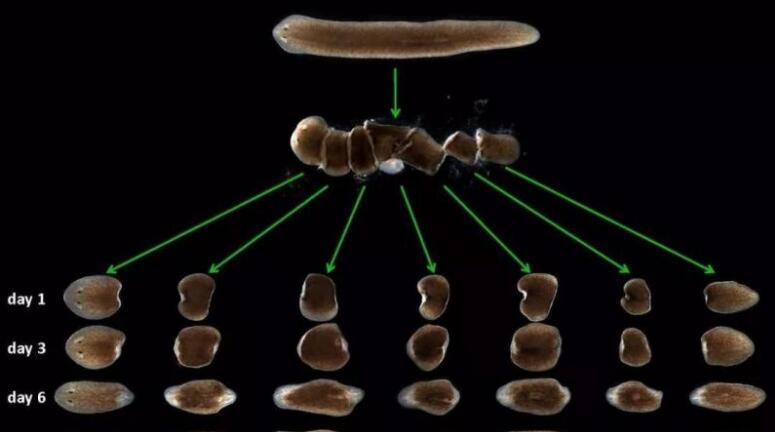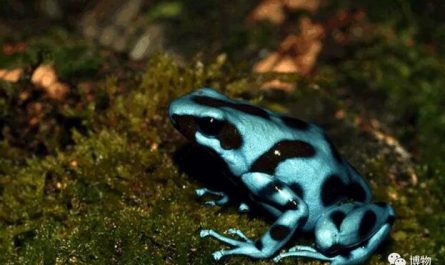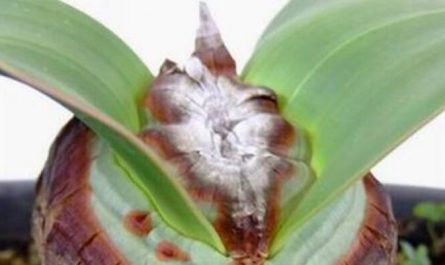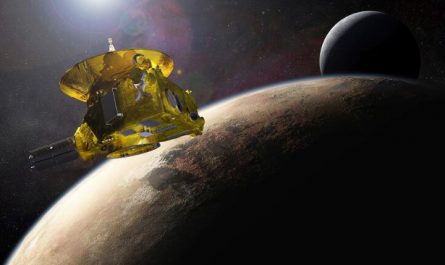The animal world really has the regenerative ability that exists in general, such as gecko tail docking and regeneration. Of course, lizards can’t forget, and there are magical earthworms, but if you accidentally cut the earthworms into three pieces, then you can guess which cutting method can live. Down?
Keep the head, part of the body
No head and no tail, part of the body
No head and tail, body tail
The first type has a relatively high proportion of living, and the second type can actually live, but you have to choose a stronger earthworm. In addition, the middle section needs to be longer. The third type is mostly dead, and rarely regenerates successfully, so the limit of earthworms It is three stages, but on the earth, there is an animal, even if it is cut into 279 pieces, it can regenerate a complete self from each piece!
Planarian: The most powerful animal in the world for regeneration
Nelson Hall, a Ph.D. in bioengineering at Stanford University, cut a planarian into four sections in the experiment, and observed and recorded the regeneration process of the planarian very carefully in the next three weeks. !
1. The planarian cut into four sections has not died, and will continue to move. It seems that it was originally a separately assembled part.
2. This batch has no head, no tail, or even no head or tail, which is continuing to grow up. It is really crazy
3. On the seventh day, new eyes began to grow at the end of the segment without head and without head and tail, which looked like two and a half dots.
4. By the 12th day, the planarian head and tail have healed, and the translucent head and tail have been distinguished, forming a new head and tail. At this time, you can eat, and you can see the white tube starting to eat.
There are two shocking incidents. The 12-day energy from cutting to eating comes from the storage of that section. The second is that it knows how to grow back no matter how it is cut. The head grows a tail, and the tail grows. In the beginning, if there is no beginning or end, then make a new one!
Basically complete regeneration in 12 days
Planarians are organisms under the class of flatworms Planaria. They are simple in form but have a wide variety. Some have a body length of less than 1 cm and some have a body length of more than 60 cm. The body of a flatworm has no body cavity, only three germ layers, which are outer layers. The germ layer, mesoderm and endoderm have an open digestive tract and two eye points for sensing light.
The organ system of the planarian is very simple, including the brain, eyes, muscle tissue, intestines, adrenal glands and epidermis. Its powerful regenerative ability, the highest record is that it was cut to 279 pieces, and it can still regenerate from each piece back to completeness. Planaria!
In addition to regenerating the head and tail, you can also grow the periphery when cut off in the middle of the body, or grow the other side of the body when cut off longitudinally, or grow two heads when the head is cut and the body is not cut!
The regenerative ability of the planarian is something you can’t cut out, and it can’t grow out without it! But the question is how did the planarian come from such a powerful regeneration ability, and what kind of magical skills does it possess?
The regenerative ability of the planarian comes from its pluripotent stem cells. According to biologists, this pluripotent stem cell accounts for 20% of the planarian body. This type of cell is also found in humans, and it can differentiate into cells of any organ!
Even if you chop up the planarian, each piece can grow a whole planarian
But adults can do this only in the liver and bone marrow, the outer layer of the skin and the inner layer of the intestine can also be restored. For example, if a human liver is removed by half, it can be restored to its original size within half a year to a year. The regeneration ability is very powerful!
However, most parts of the human body cannot grow in this way. For example, if the skin is larger, scar tissue will be formed to fill up. This part will not form pores and cannot wick away sweat. If the area is large, these parts will be itchy and very uncomfortable in summer. , And the scar is very ugly, affecting the appearance!
Planarians with a large number of stem cells can deal with any situation. However, there are some new discoveries about the regeneration of planarians. Earlier, it was thought that planarian regeneration was developed through dedifferentiation and redifferentiation of cells in the wound, but the latest research found , The missing part is directly differentiated and grown from stem cells in the planarian body!
There are a large number of stem cells called Neoblasts in the planarian. They are widely present in tissues. They have no cytoplasm but only large nuclei. Some are similar to embryonic cells. Most organisms will disappear or exist in specific parts after adulthood. , But the planarian will not, and will still exist in large numbers. Once injured, these cells will gather in the wound and regenerate into the missing part.
But the question is how do these cells know what organ they want to grow into? Biologists have discovered that Neoblast stem cells are a primary cell population, and their future development fate is already doomed before they divide. It seems that there are stem cells that will grow into various organs in the future, such as eye-spot cells. It was discovered that a unique transcription factor was activated.
Therefore, scientists have been studying the planarian for more than 200 years. Through the genetic manipulation of the planarian, which is simple in shape and easy to track cell behavior, and the understanding of its regeneration and genetics, the planarian has become the most important model in the animal kingdom. One of the creatures.
When can humans regenerate their organs?
Humans are undoubtedly the most envious of the regenerative ability of the planarian. Of course, we don’t expect to regenerate one after losing the head. After all, it is almost impossible for a fully differentiated organ to re-grow, but we hope to do it. It can be completed when a small part is missing!
For example, accidentally cut off the finger or the tip of the nose, or part of the ear is missing, etc. Dr. Stephen Badillac, deputy director of the McGowan Institute for Regenerative Medicine at the University of Pittsburgh, is studying this “regeneration” technology, hoping to make a car accident one day Or patients who lost a large area of skin and muscle in the fire recover their body. Dr. Badilak said that maybe the planarian’s ability will one day bring strong regeneration to humans.






